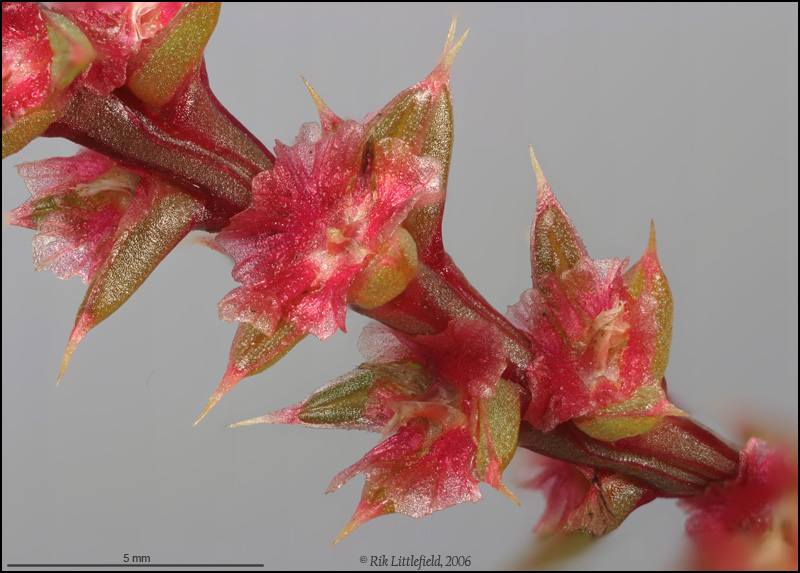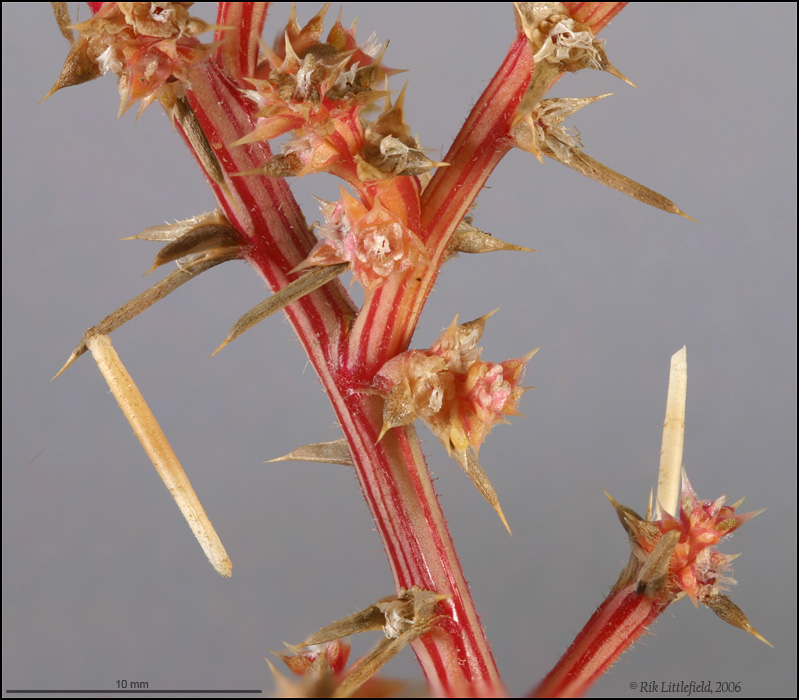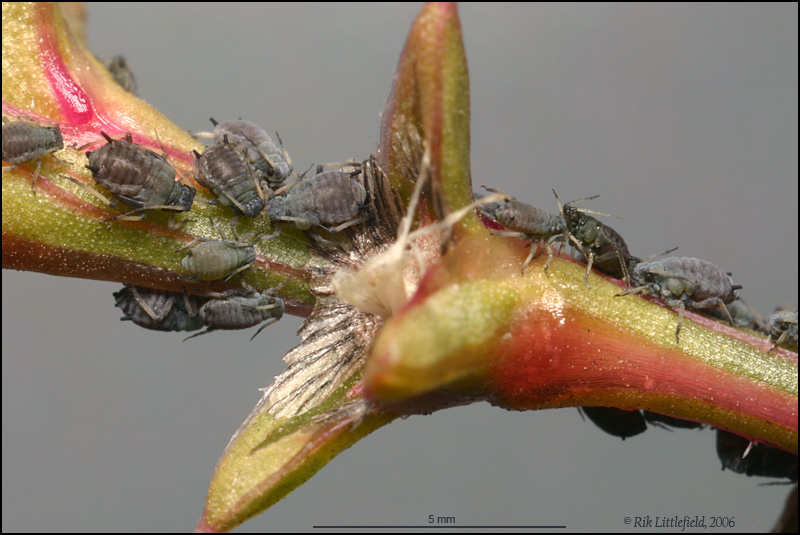Thanks, Doug & Ken. Yep, they're annual, and the blowing-around definitely does seed dispersal. They are prolific seed producers -- see abstract below.
By the way, there are several species of
Salsola, and I haven't tried to figure out exactly which one this is. (Heck, I might have two kinds, or it might not even be a
Salsola at all, though I think the odds are good.) At various reliable looking web sites, I've seen references to
Salsola tragus,
S. iberica, and
S. kali, all called "Russian thistle" and described as covering large sections of the west.
In perusing the web, perhaps the most interesting site that I found was
http://pnwsteep.wsu.edu/tillagehandbook ... 051799.htm. It seems to come from a research program joint between Oregon State University, Washington State University, and University of Idaho, and it addresses the potential
use (note positive sense) of Russian thistle for erosion control in wheat fields. I suspect this is along the lines of "Well, we can't get rid of it. Can we find something it's good for?" But in any case, the article has some interesting stats on the plant's biology.
ABSTRACT
Russian thistle (Salsola iberica Sennen and Pau) is a major broadleaf weed in dryland crops (less than 12 inch annual precipitation) in the Pacific Northwest of the USA. Russian thistle frequently infests wheat (Triticum aestivum L.) and other spring-sown crops, especially during drought. Quantitative information on water use, biomass accumulation, and seed production of Russian thistle after wheat harvest is lacking. In a 2-yr field study at Lind, Washington, Russian thistle plants were allowed to grow yearly in spring wheat in a grid pattern without competition from other weeds. Individual Russian thistle plants used 20 gallons of soil water while growing with the crop. From wheat harvest in early August until killing frost in late October, each Russian thistle used an additional 27 gallons of soil water. Water use occurred within a 5-ft radius of the Russian thistle. Spring wheat competed with Russian thistle for water at shallow soil depths; most water use by Russian thistle was from deeper than 1.0 m. Russian thistle dry weight increased from 0.4 to 2.8 lbs per plant between grain harvest and killing frost. Russian thistle seeds were either not produced or germinable until mid-September. By late October, individual plants had produced 67,000 and 25,000 seeds in 1996 and 1997, respectively. Water recharge into the soil was reduced near Russian thistle after a winter of high precipitation where water infiltration occurred to depths greater than 3 ft, but was not affected the next year when winter precipitation was close to the long-term average. In low crop residue situations, rapid post-harvest growth by Russian thistle (before seed production) provides valuable surface cover for erosion control, but with the prospect that soil water may be reduced for the subsequent crop.
--Rik



